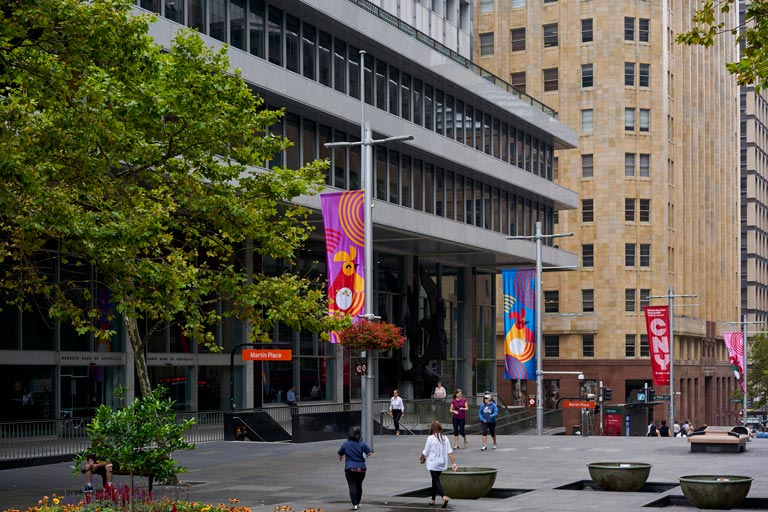The RBA released their minutes today relating top the March 2019 meeting. They called out the market’s view that policy rates would be lower in 2020 (a turn around), lower retail, and slowing housing momentum, despite strong employment.

In considering the stance of monetary policy, members observed that growth in the global economy had been above trend in 2018, although it had slowed over the second half of the year and timely indicators suggested that this moderation had extended into 2019. Nonetheless, output growth had remained sufficient in most advanced economies for labour markets to remain tight, putting upward pressure on wages. Members noted the tension in a number of economies between slower GDP growth and resilient labour markets. The transmission of tighter labour market conditions to inflation pressures was taking longer than might be expected, based on historical experience.
The authorities had responded to slowing growth in China by putting in place policies to increase the flow of credit to the private sector and easing fiscal policy in a targeted way to support growth, while continuing to pay close attention to risks in the financial sector. Slowing growth in China and ongoing trade tensions had led to lower growth in global trade, and continued to be a source of uncertainty for the outlook for global growth.
The tightening of global financial conditions, associated with higher risk premiums required by investors around the turn of the year, had eased. Members assessed that global financial conditions remained accommodative, with financial market pricing indicating that little change to the accommodative stance of monetary policy in the advanced economies was expected over the following year or so. The terms of trade for Australia were expected to have remained above their trough in early 2016 and the Australian dollar had remained within its narrow range of recent times.
Domestically, there continued to be tension between the ongoing improvement in labour market data and the apparent slowing in the momentum of output growth in the second half of 2018. Leading indicators of conditions in the labour market, such as vacancies and hiring intentions, pointed to further tightening in the labour market in the near term. Private sector wages growth had picked up further in the December quarter, consistent with the Bank’s forecasts and survey evidence that a significant share of firms were finding it difficult to attract suitable labour.
Although output growth had slowed in the second half of 2018, the outlook for business investment and spending on public infrastructure had remained positive. Growth in consumption was expected to be supported by an increase in growth in household disposable income. However, there continued to be considerable uncertainty around the outlook for consumption given the environment of declining housing prices in some cities, low growth in household income and high debt levels. Dwelling investment was expected to subtract from growth in output over the forecast period and, unless pre-sales volumes started to increase, this decline could be sharper than currently expected.
The process of adjustment in the housing market had continued. Housing prices in Sydney, Melbourne and Perth had declined further, and turnover in the housing market had fallen significantly. Rent inflation had remained low across most of the country despite declines in rental vacancy rates over the previous year, except in Sydney, where rental vacancy rates had been increasing. Credit conditions had tightened for some borrowers and the demand for housing credit had slowed noticeably as conditions in the housing market had changed. Mortgage rates had remained low and there was strong competition for borrowers of high credit quality.
Members noted that the sustained low level of interest rates over recent years had been supporting economic activity and had allowed for gradual progress to be made in reducing the unemployment rate and returning inflation towards the midpoint of the target. While the labour market had continued to strengthen, less progress had been made on inflation. Looking forward, the central forecast scenario was still for growth in GDP of around 3 per cent over 2019 and a further decline in the unemployment rate to 4¾ per cent over the next couple of years. This further reduction in spare capacity underpinned the forecast of a gradual pick-up in wage pressures and inflation. Given this, members agreed that developments in the labour market were particularly important.
Taking account of the available information on current economic and financial conditions and how they were expected to evolve, members assessed that the current stance of monetary policy was supporting jobs growth and a gradual lift in inflation. However, members noted that significant uncertainties around the forecasts remained, with scenarios where an increase in the cash rate would be appropriate at some point and other scenarios where a decrease in the cash rate would be appropriate. The probabilities around these scenarios were more evenly balanced than they had been over the preceding year.
Members agreed to continue to assess the outlook carefully. Given that further progress in reducing unemployment and lifting inflation was a reasonable expectation, members agreed that there was not a strong case for a near-term adjustment in monetary policy. Rather, they assessed that it would be appropriate to hold the cash rate steady while new information became available that could help resolve the current tensions in the domestic economic data. Members judged that holding the stance of monetary policy unchanged at this meeting would enable the Bank to be a source of stability and confidence, and would be consistent with sustainable growth in the economy and achieving the inflation target over time.
The Decision
The Board decided to leave the cash rate unchanged at 1.5 per cent.
